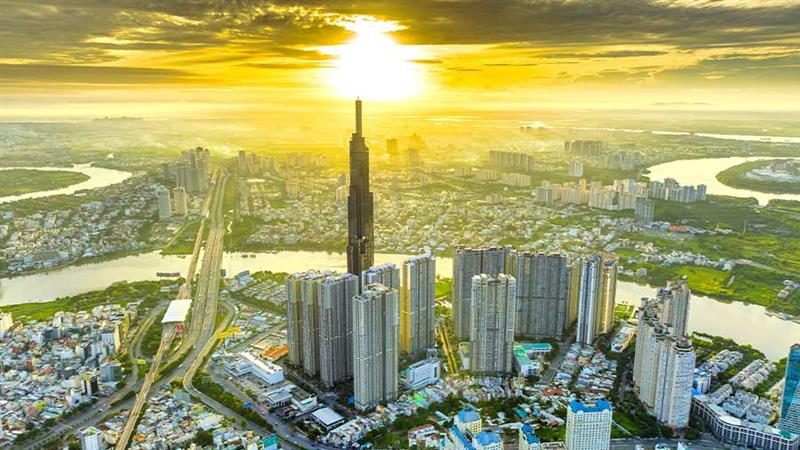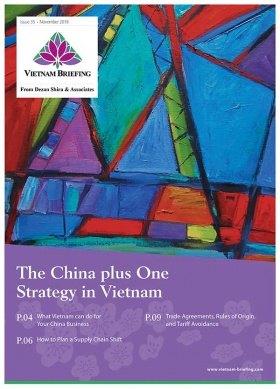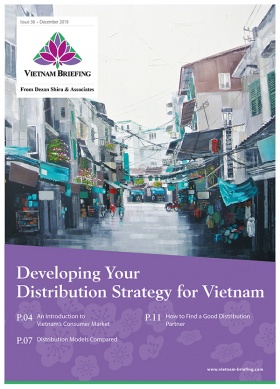An Economic Overview of Ba Ria – Vung Tau Province
Ba Ria – Vung Tau (BRVT), situated in the southern key economic zone, is one of the major economies and investment destinations in Vietnam. The region contributes close to eight percent to the national GDP and over 10 percent to the government’s revenues. The rapid economic growth in the last decade has led the province to have one of the highest GDP per capita and living standard in Vietnam.
Economy and trade
In 2018, the region’s gross regional domestic product (GRDP) grew by 7.2 percent (excluding oil and gas), the fastest in eight years.
The industry and construction sector accounted for 57.43 percent of the total economy, followed by the services and agriculture, forestry, and fishery sectors.
Sectors
In 2018, the industry and construction sector grew by 8.32 percent, while the services sector grew at 6.59 percent.
In the services sector, the accommodation and catering industry accounted for the highest growth at 10.21 percent, followed by the wholesale and retail industry at 7.37 percent and warehousing and transportation services at 6.62 percent.
The agriculture, forestry, and fishery sector grew by 3.08 percent.
In addition to the aforementioned sectors, BRVT is also a major oil and gas production hub due to its huge reserves. The province accounts for around 93 percent of the country’s oil reserve and 16 percent of natural gas reserves. This has led to large-scale investments in industries such as petrochemicals, oil exploration, machinery, power generation, LPG, fertilizer, steel, logistics, and construction materials.
Trade
Excluding oil and gas, export turnover grew by 13.32 percent in 2018 to US$4.4 billion, while import turnover increased by 11.97 percent to US$6.2 billion.
FDI
As of 2018, the province has 351 FDI projects valued at US$27.3 billion. In addition, BRVT has also attracted 521 domestic projects with a total registered capital of more than VND276 trillion (US$12 billion).
2018
In 2018, BRVT attracted 44 foreign and 59 domestic projects. Foreign-invested projects were valued at US$1.9 billion, while VND 18.76 trillion (US$809 million) was invested in domestic projects. The province ranked second amongst all the cities and provinces in Vietnam in terms of FDI registered capital.
Infrastructure
BRVT serves as a major trade gateway for Vietnam due to its proximity to industrial zones, port complex, major highways, and transshipment routes. Infrastructure investments in the province have not only increased connectivity within the province but also with neighboring economic hubs such as Ho Chi Minh City and Dong Nai.
Ports
BRVT is a major gateway for international shipments in Southeast Asia, due to the Cai Mep- Thi Vai port complex. The port system ranks among the major ports in the region and one of only 19 in the world capable of handling 190,000 deadweight tonnage (DWT) vessels.
Container ships from this port complex are capable of transporting goods to Europe as well as North America. In addition, the province is also around 70 km from Ho Chi Minh City’s Cat Lai port.
The government is also planning to increase investments in the development of terminals and road infrastructure to increase connectivity, efficiency, and port capacity.
Airports
The Tan Son Nhat International Airport in Ho Chi Minh City is less than 90 km from the province and around 70 km from the Cai Mep – Thi Vai port complex.
In addition, the new Long Thanh international airport which is under construction is only around 30 minutes from the port complex and 50 km from the province.
Highways
The province has access to major national highways such as National Highway 51 and National Highway 1A. In addition, expressways such as Ho Chi Minh – Long Thanh Dau Giay Expressway, Bien Hoa-Vung Tau expressway, and Ben Luc-Long Thanh highway (to open in 2020) further increase connectivity with the surrounding provinces.
Within the province, the connectivity between ports or industrial zones with the national roadway systems is supported by numerous regional highways, port roads, and industrial zone roads.
Industrial Zones
As of August 2018, there are 15 industrial parks in BRVT, including nine which are operational with an average occupancy rate of 47 percent. There are currently 339 projects in local industrial parks, including 162 foreign and 177 domestic projects.
The locality is also home to two industrial parks that specialize in supporting industries, Phu My 3 and Da Bac.
Going forward
The government aims to attract US$4 billion FDI by 2020. In order to meet its target, the provincial government plans on more investor-friendly reforms in areas such as granting of investment licenses, building permits, and customs to reduce clearance time. In addition to reforms, BRVT also plans on increasing investments in infrastructure, distribution networks, technology transfer, skill development, and funding for small and medium-sized enterprises.
The key sectors promoted by the government include logistics, tourism, high-tech agriculture, and urban development. Other areas of opportunities for investors include food processing, shipbuilding, traffic infrastructure, and metallurgy-mechanical engineering.
Vietnam Briefing is produced by Dezan Shira & Associates. The firm assists foreign investors throughout Asia from offices across the world, including in Hanoi and Ho Chi Minh City. Readers may write vietnam@dezshira.com for more support on doing business in Vietnam.
- Previous Article Vietnam’s New Incentives for Science and Technology Firms
- Next Article 2018年越南初创企业投资激增三倍





























